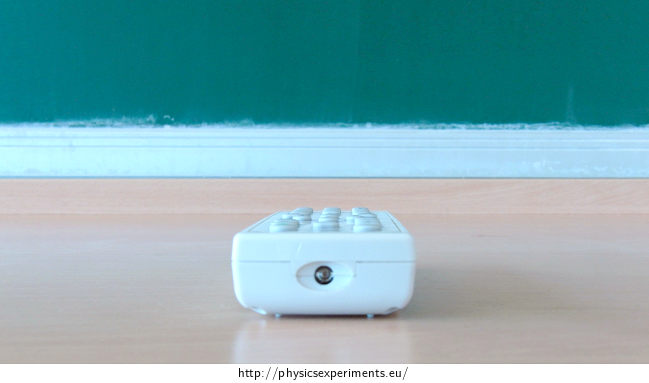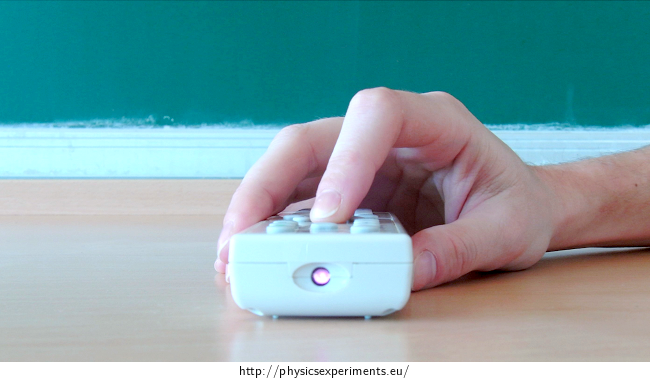Infrared radiation – remote control
Experiment number : 4299
Goal of the experiment
The goal of this experiment is to visualise the radiation generated by the diode in the a remote control.
Theory
Infrared radiation (IR) is a part of the electromagnetic radiation spectrum with a wavelength of approximately 760 nm to 1 mm (see Figure 1, which is taken from Wikipedia).

This wide wavelength range causes IR radiation to have many different uses. Long-wave IR radiation is considered as so-called thermal radiation and is used, for example, in infralamps or thermal imaging cameras, which capture it and can determine the surface temperature of objects from it. In contrast, shortwave IR radiation is used, for example, in remote controls.
Remote control
The diode in the remote control generates IR with a wavelength of approximately 950 nm. Most cameras convert this radiation into visible light. The colour of this light depends on the type of remote control and the receiving device, and is usually white, blue or violet. Some newer phones have cameras with an IR filter that prevents the passage of infrared radiation. Therefore, they cannot be used in our experiment because we will not see the remote control diode blinking through the camera of these phones.
Equipment
Remote control
Camera, mobile phone with a camera without IR filter or a computer with a webcam
Procedure
Turn on the camera and point the remote control at it from a distance of a few centimetres away.
Press any button on the remote control and watch the remote control diode at the camera display.
Example of results
In the first photo we can see the remote control, which does not send any signal.

In the second photo, we pressed a button on the remote control, which started sending a signal in the form of IR. The camera chip converted the IR into a visible light of white-violet colour.

Technical notes
If your camera does not display the blinking diode, check if there are charged batteries inside. If the remote control is working properly, there is probably an IR filter inside your camera.
The sensitivity of silicon CCD or CMOS chips used in today’s (year 2019) mobile phones and cameras reaches up to a wavelength of approximately1,1 \(\mu\)m.
Pedagogical notes
When demonstrating this experiment, we can ask our students what colour IR actually is. Some students may answer that it is the colour they see on their mobile phone screen - the colour that the LED flashes. In this case, it is useful to remember that infrared radiation is invisible, so it has no colour. We do not see the IR radiation, of course, but only the light that is produced from the IR radiation when it interacts with the chip. We can visualise IR radiation in this way, not see it.






